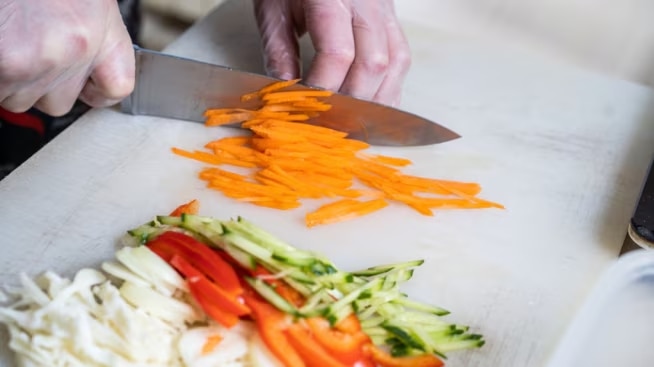Tackling any ingredient will come comfortably, efficiently and safely with the right tools – a chef's knife and large chopping board – and plenty of practice. Here, celebrated chef and AEG ambassador Mark Best shares his tips and techniques on culinary knife skills for the home chef.
Chiffonade
Best for leafy green vegetables such as spinach, sorrel, or Swiss chard, or a flat-leaved herb, like basil, this technique is achieved by stacking and rolling leaves together tightly, then slicing on the perpendicular. “This common contemporary technique can also be used for coleslaw and a garnish of fine herbs, like parsley and basil. Some care and a very sharp knife will give a superior result,” says Best, advising a sharp Japanese mandolin instead for a uniform result when cutting firm lettuces or cabbage.
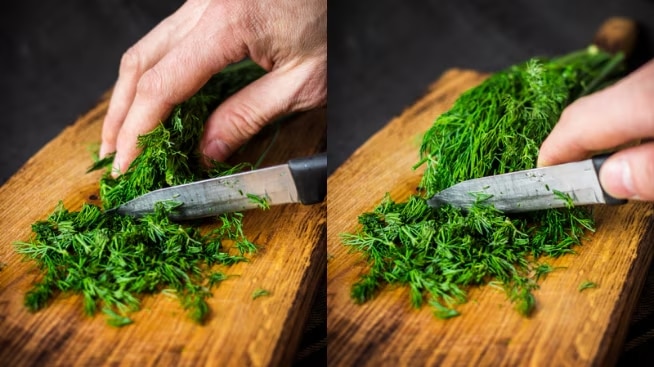
Brunoise
The finest dice of small uniform cubes, the brunoise is an extension of the julienne. The ingredient is first julienned and then turned a quarter and diced, producing cubes of about 2-3mm on each side. “This knife cut is classically used for clear soups especially in formal occasions where spoons are small and mouthfuls around conversation circumspect,” says Best. As a general cutting technique rule and to avoid accidents, ensure your knife is kept sharp enough to cut through the skin of a tomato without any pressure. “Chopping an onion with a very sharp knife produces no tears,” says Best.
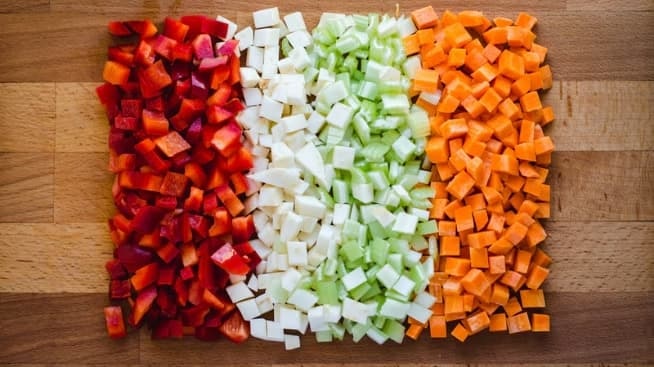
Paysanne
Translating to “country style”, this common cutting technique often used on vegetables refers to slicing your ingredient thinly but keeping with its natural shape. Remember, no matter what you’re cutting, tuck your fingertips under you knuckles and hold with a clawed hand to avoid any cutting accidents at the tips of your fingers. “Producing 1cm x 1cm squares of vegetables about 1 mm thick, the paysanne cut is used for soups or trims in some aromatic preparations when the cooking time will be short,” says Best, adding, “It’s particularly useful for minestrone soup so that the vegetables cook evenly and the evenness of cut makes for a more refined dish that actually enhances the flavour.”
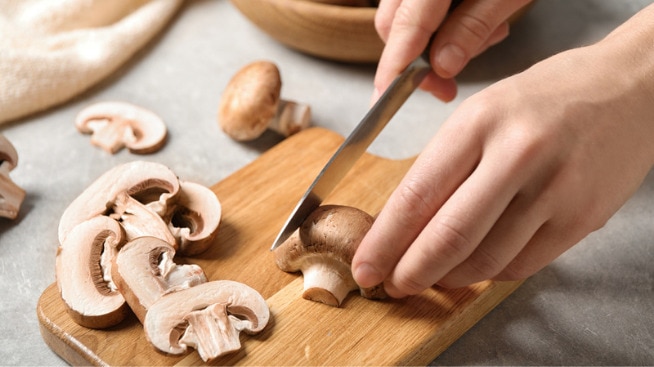
Macedoine
Often eaten as is in a dish like a salad, these uniform 4-5mm cubes are achieved by cutting down a vegetable or fruit baton. Best says while the macedoine cut is mostly used for fruits due to their delicate nature, this technique can also be used for vegetables, “especially root vegetables, in quick braised dishes.” As a general cutting rule, when you grasp your knife with your dominant hand, it should be far enough up the handle so your fingers are grasping the blade itself at the point it meets the handle.
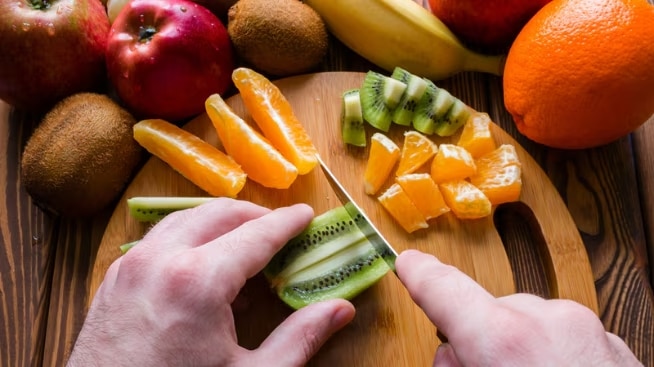
Julienne
Allowing ingredients to cook evenly, this method is known as the matchstick cut. After peeling and trimming, slice your ingredient into even sticks roughly 3mm x 3mm x 5cm, or the size of a matchstick. Best says, “this common kitchen cut when done carefully can be quite beautiful, especially in Chinese style broths or salads, where the care taken with the preparation of the vegetables, reflects on the status of the guest.
